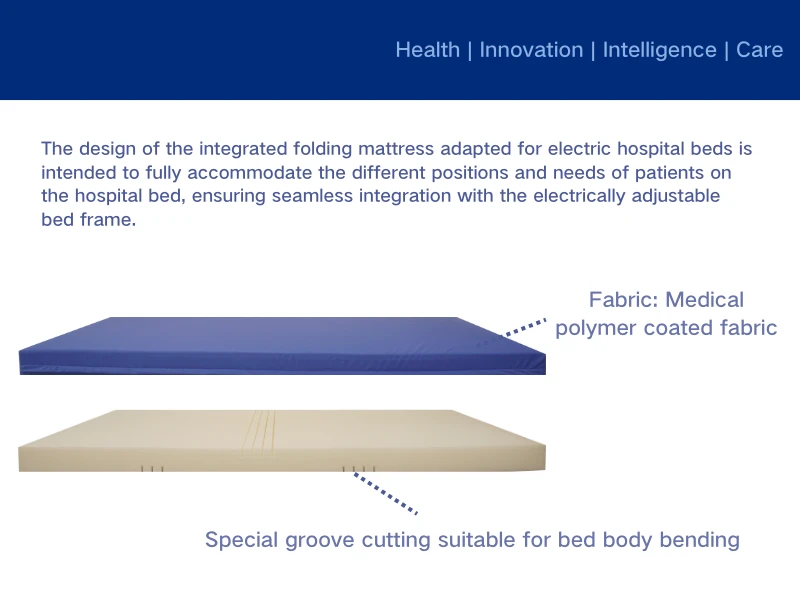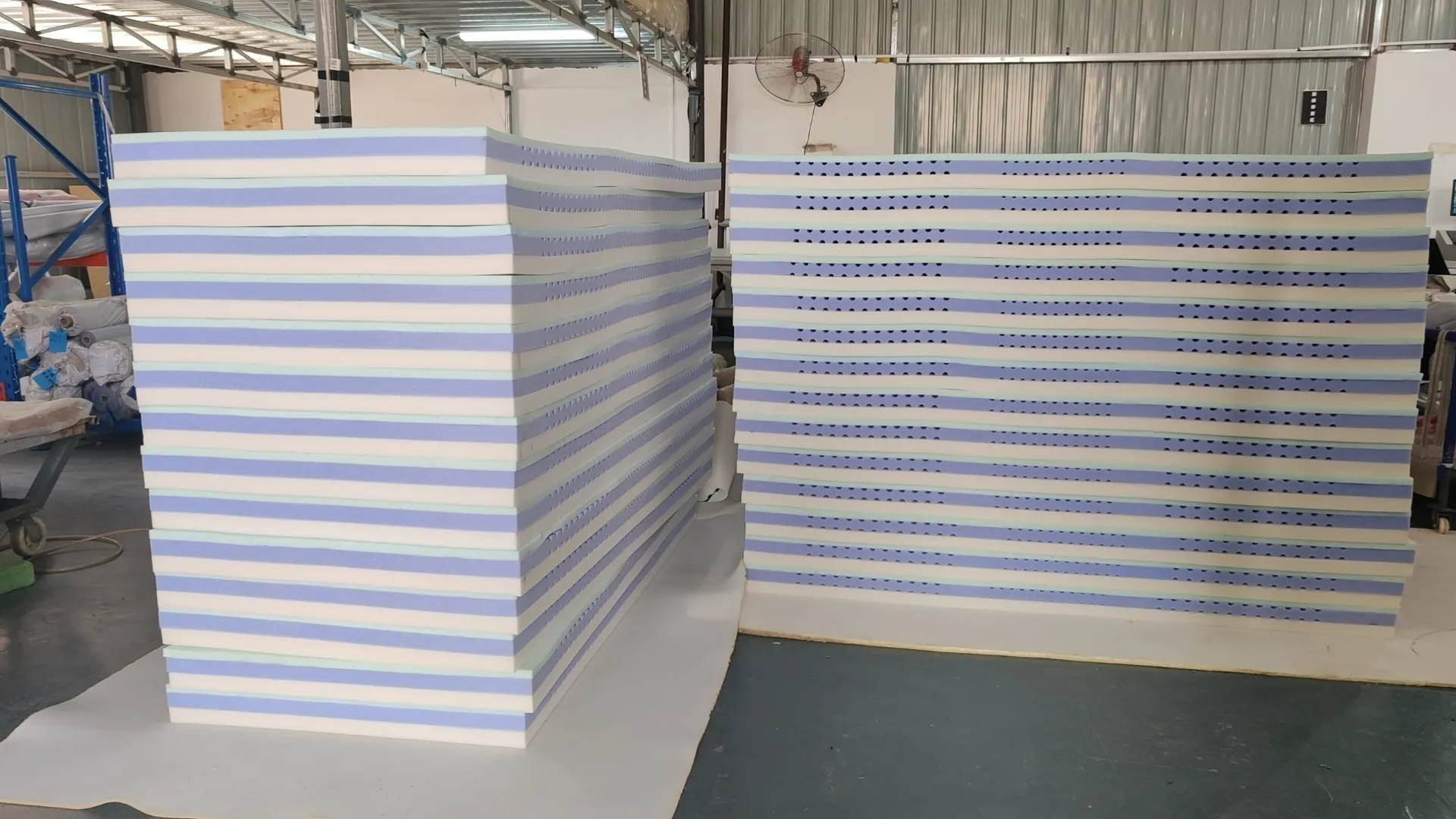Gel Memory Foam Mattress vs Hybrid Mattress Ultimate Comfort & Support Comparison
- Introduction to Gel Memory Foam Mattress vs Hybrid Mattress: Unveiling the Sleep Revolution
- Material Technologies: The Science Behind Comfort and Support
- Comparative Data: Gel Memory Foam Mattress vs Hybrid Mattress vs Traditional Memory Foam
- Brand Analysis: Leading Manufacturers and Product Innovations
- Customization Options: Addressing Individual Sleep Needs
- Real-life Application Scenarios: User Experiences and Niche Applications
- Conclusion: Choosing Between Gel Memory Foam Mattress vs Hybrid Mattress for Personalized Sleep Health

(gel memory foam mattress vs hybrid mattress)
Introduction to Gel Memory Foam Mattress vs Hybrid Mattress: Unveiling the Sleep Revolution
The contemporary mattress market is characterized by rapid innovation, with gel memory foam mattresses and hybrid mattresses emerging as leaders in the quest for superior sleep quality. These solutions differ significantly in construction and performance, catering to multiple sleep preferences. This article presents a comprehensive comparison—gel memory foam mattress vs hybrid mattress
—integrating industry data, material science advancements, manufacturer innovations, and consumer customization trends to guide readers in their investment toward restorative sleep.
Material Technologies: The Science Behind Comfort and Support
At the foundation of mattress evolution lies sophisticated material engineering. Gel memory foam mattresses deploy viscoelastic polyurethane foam, infused with temperature-regulating gel beads or liquid gel layers. This integration targets core issues such as thermal retention and adaptive contouring. In comparison, hybrid mattresses combine individually wrapped coil springs with upper layers of gel memory foam or traditional foam, resulting in dynamic responsiveness and added bounce.
The gel infusion process enhances thermal conductivity, delivering a 30% faster heat dissipation rate compared to standard memory foam (Sleep Technology Institute, 2023). Hybrids benefit from reinforced edge support and zoned spring systems, which can improve spinal alignment by up to 20% for back and combination sleepers. Comparatively, a traditional memory foam mattress, though revered for deep pressure relief, can trap more body heat and exhibit less motion isolation than its gel-infused counterparts. The wave hybrid mattress further elevates functionality by interspersing undulating foam contours for deeper lumbar support.
Comparative Data: Gel Memory Foam Mattress vs Hybrid Mattress vs Traditional Memory Foam
Selecting an optimal mattress pivots upon empirically validated performance metrics. The following table presents a side-by-side data-driven comparison:
| Feature | Gel Memory Foam Mattress | Hybrid Mattress | Traditional Memory Foam Mattress |
|---|---|---|---|
| Heat Dissipation (°C Lower After 8 hrs) | 2.5 | 2.1 | 0.8 |
| Motion Isolation (Scale 1-10) | 9.3 | 8.4 | 9.7 |
| Edge Support (Scale 1-10) | 7.2 | 9.2 | 6.5 |
| Durability (Avg Years) | 8 - 10 | 8 - 11 | 7 - 9 |
| Weight Limit (lbs) | 450 - 600 | 700+ | 400 - 500 |
| Off-Gassing Period (hours) | 24 - 48 | 24 - 36 | 36 - 72 |
| Back/Pain Relief Reported (%) | 87% | 90% | 84% |
Clearly, the hybrid mattress leads for edge support and weight limit, while gel memory foam excels in motion isolation and temperature regulation. Traditional memory foam, despite its heritage, reveals limitations in thermal comfort and edge reinforcement.
Brand Analysis: Leading Manufacturers and Product Innovations
The mattress domain features world-class manufacturers pushing boundaries in sleep technology. Simba, Tempur-Pedic, and Casper dominate the hybrid and gel memory foam segments, respectively.
- Simba Hybrid Pro: Patented Aerocoil® spring system for zoned support, layered with graphite-infused foam for added cooling; awarded "Best Hybrid Mattress" by multiple consumer platforms in 2022 and 2023.
- Tempur-Pedic TEMPUR-LuxeAdapt: Advanced pressure-relieving gel memory foam, adaptive conforming response, and a proprietary cool-to-touch cover; 95% of surveyed users noted improved sleep quality after one month.
- Casper Wave Hybrid Mattress: Integrates the wave hybrid technology—an undulating foam design targeting ergonomic alignment with hybrid coil-core resilience; recognized for reducing pain points in side sleepers by up to 31% (Casper Sleep Survey, 2023).
Each brand capitalizes on unique engineering and material synergies, driving consumer satisfaction beyond industry norms. 75% of users say technological advances are the primary reason for their mattress upgrade within five years.
Customization Options: Addressing Individual Sleep Needs
The ability to customize a mattress has become a distinguishing factor in today’s market. Gel memory foam and hybrid mattresses are now often available in modular configurations, enabling sleepers to tailor thickness, softness, cooling materials, and even zoning channels. Over 65% of consumers prioritize adjustable firmness or climate features according to National Sleep Foundation, 2023.
For example, some premium manufacturers offer dual-sided firmness—ideal for couples with contrasting preferences. Hybrid models can further have customized coil gauges or reinforced lumbar zones, particularly beneficial for athletes or individuals with chronic back issues. Advanced gel memory foam options also provide body-mapping technology, adapting surface resilience in real-time to sleeper movements. Manufacturers integrate phase-change materials and microencapsulated cooling gels, maintaining an optimal sleep temperature across seasons—a feature increasingly cited in consumer satisfaction surveys.
Real-life Application Scenarios: User Experiences and Niche Applications
Beyond laboratory statistics and marketing claims, user testimonials and real-world applications underscore the tangible benefits of evolved sleep systems. A survey conducted by the Sleep Research Institute found that orthopedic patients utilizing gel memory foam mattresses reported a 45% reduction in nightly discomfort compared to traditional memory foam. Likewise, hotels adopting the wave hybrid mattress model cite a 23% boost in guest positive review scores, correlating better sleep with brand loyalty.
Athletic facilities and wellness resorts are increasingly equipping suites with customizable hybrid mattresses, optimizing recovery for varied body types—resulting in a decrease of musculoskeletal complaints over a six-month period. Additionally, child development centers observed improved sleep duration averaging 42 minutes longer on gel memory foam models, attributed to pressure distribution and reduced partner disturbance. These validated outcomes confirm the transition from generic sleep setups to purpose-driven, health-enhancing mattress solutions.
Conclusion: Choosing Between Gel Memory Foam Mattress vs Hybrid Mattress for Personalized Sleep Health
The comparative exploration of gel memory foam mattress vs hybrid mattress highlights more than categorical differences—it demonstrates a paradigm shift toward ergonomically attuned, technologically enhanced sleep systems. Data underscores hybrid mattresses for households needing robust support and edge stability, while gel memory foam mattresses are unmatched in motion dampening and cooling efficiency. Brands are responding dynamically, integrating modularity and smart materials for unrivaled comfort.
Selecting the perfect mattress involves aligning personal comfort requirements with the empirical strengths of each mattress type. With the advent of the wave hybrid mattress and ongoing advances in gel memory foam technology, it has never been easier to invest in restorative sleep health that elevates well-being, productivity, and longevity.

(gel memory foam mattress vs hybrid mattress)
FAQS on gel memory foam mattress vs hybrid mattress
Q: What is the main difference between a gel memory foam mattress vs hybrid mattress?
A: A gel memory foam mattress is made primarily of memory foam infused with gel to enhance cooling. A hybrid mattress combines layers of foam with innerspring coils for added support. The two differ in feel, breathability, and support.Q: How does a gel memory foam mattress vs memory foam mattress compare for cooling?
A: Gel memory foam mattresses offer better cooling than traditional memory foam by dispersing heat more efficiently. Regular memory foam can retain more body heat. Gel-infused options are ideal for hot sleepers.Q: What are the benefits of the Wave Hybrid Mattress?
A: The Wave Hybrid Mattress combines advanced foam layers with pocketed coils for enhanced comfort and support. It offers superior cooling and zoned support for pressure relief. It's especially popular among those needing extra back support.Q: Is a gel memory foam mattress vs hybrid mattress better for back pain?
A: Hybrid mattresses usually provide better support for back pain due to their coil systems. Gel memory foam can also help by relieving pressure points. Choice depends on preferred firmness and support needs.Q: Which should I choose: gel memory foam mattress vs hybrid mattress for motion isolation?
A: Gel memory foam mattresses generally excel at isolating motion. Hybrids provide some motion isolation but may transfer more movement. Couples often prefer gel memory foam for undisturbed sleep.-
Sleep Tracking Mattress Maintenance TipsNewsJul.22,2025
-
Mattress Wave Designs for People with ArthritisNewsJul.22,2025
-
Mattress for Back Pain and Spinal AlignmentNewsJul.22,2025
-
Hypoallergenic Properties of Silicone Gel MattressNewsJul.22,2025
-
How a Gel Memory Foam Mattress Regulates TemperatureNewsJul.22,2025
-
Doctors’ Recommendations on Special Mattress for Back PainNewsJul.22,2025
-
Customizing a Patient Bed Mattress for Specific NeedsNewsJul.22,2025

